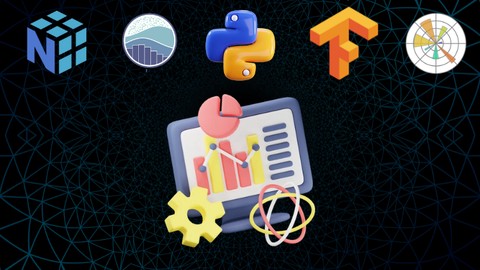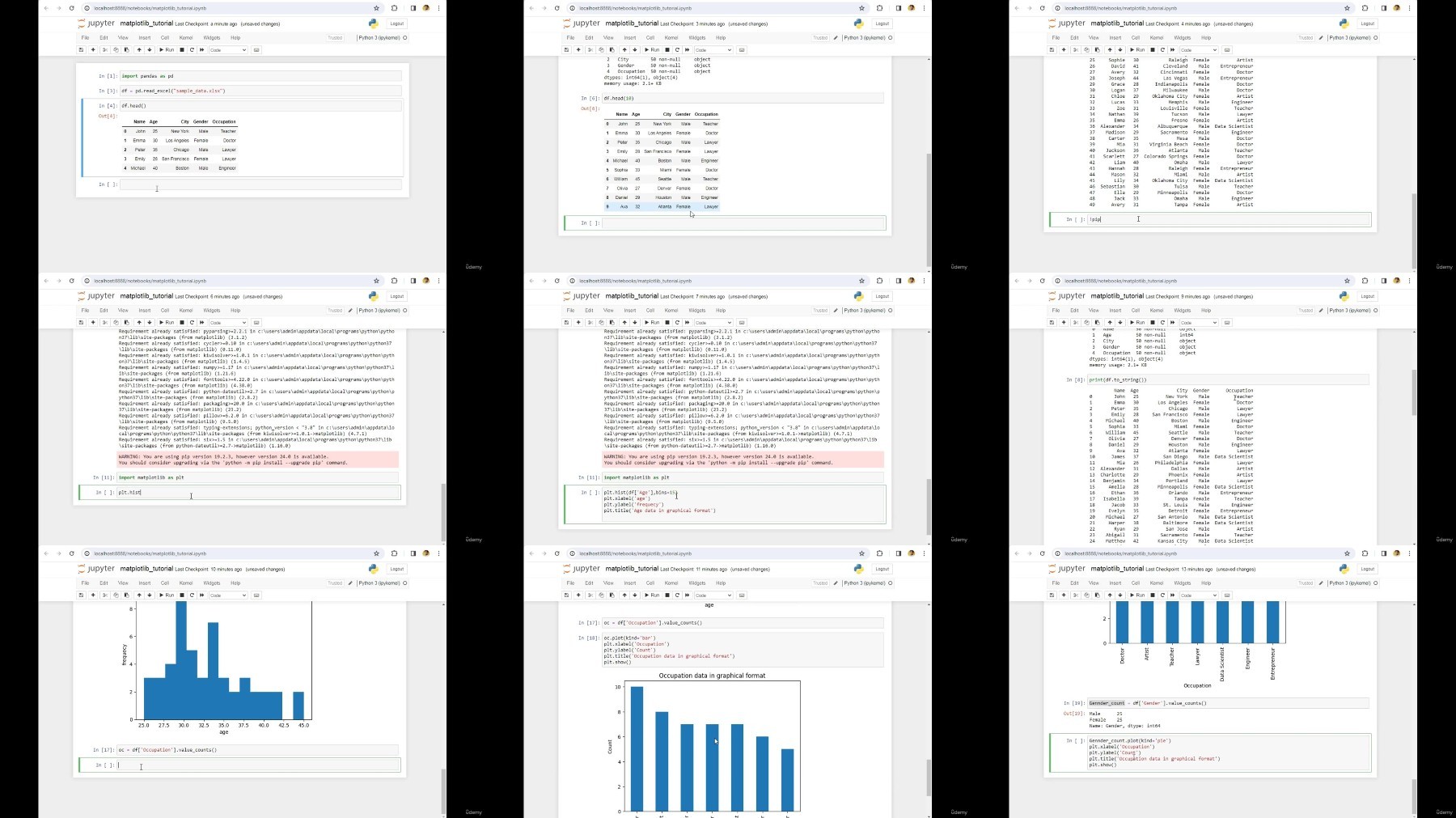Mastering Data Science: From Analysis To Application

Mastering Data Science: From Analysis To Application
Published 4/2024
MP4 | Video: h264, 1920x1080 | Audio: AAC, 44.1 KHz
Language: English
| Size: 680.29 MB[/center]
| Duration: 1h 48m
Empowering Data Enthusiasts: From Exploration to Deployment with Python
What you'll learn
Data Exploration and Analysis Proficiency
Data Cleaning and Preprocessing Skills
Model Building and Evaluation Techniques
Deployment and Application Development
Understanding Data Science Workflow
Effective Communication of Data Insights
Requirements
A basic comprehension of data ideas, experience with Jupyter Notebook, basic Python programming ability, and a strong interest in data analysis and machine learning are prerequisites for this course.
Description
Embark on a journey of transformation into the field of data science with comprehensive courses designed to provide you with the skills and knowledge you need to navigate the complexities of data analysis, machine learning, and model deployment. . This immersive experience delves into fundamental data science concepts and practical techniques using Python, the industry-leading language for data manipulation and analysis. Introduce the basic principles of data science from the beginning, understand its importance in today's data-driven world, and explore its diverse applications in different fields. Led by an experienced instructor, you'll learn how to harness the power of Python to load datasets, manipulate data with Pandas, and gain insights through exploratory data analysis. Through hands-on exercises and real-world examples, master the art of data visualization using Matplotlib and Seaborn and gain the ability to communicate complex insights clearly and accurately. Then, embark on a fascinating exploration of the legendary Titanic dataset and uncover its secrets through data cleaning, visualization, and feature engineering. Over the course of the course, you will delve into the intricacies of machine learning, use logistic regression to build predictive models, and evaluate their performance using industry standard metrics. But the journey doesn't end here. Step into the realm of model deployment and learn how to use Streamlit to build interactive user interfaces and host predictive models on your web server for seamless access. By the end of this course, you will be a competent data scientist with the skills to tackle real-world data challenges with confidence and accuracy. Whether you're an experienced professional looking to improve your skills or an aspiring data enthusiast looking to embark on a new journey, this course will help you discover the full potential of data science. and make a meaningful impact on weight gain in today's data-driven world. Join us and embark on a journey of data discovery, innovation, and endless possibilities.
Overview
Section 1: Introduction to data science
Lecture 1 Introduction to Data Science
Section 2: Loading dataset in Jupyter Notebook
Lecture 2 Loading dataset in Jupyter Notebook
Section 3: Introduction to Pandas
Lecture 3 Introduction to Pandas
Section 4: Exploring Columns in Pandas
Lecture 4 Exploring Columns in Pandas
Section 5: Data Visualization using Matplotlib
Lecture 5 Data Visualization using Matplotlib
Section 6: Data Visualization with Seaborn
Lecture 6 Data Visualization with Seaborn
Section 7: Exploring the Titanic Dataset
Lecture 7 Exploring the Titanic Dataset
Section 8: Data Cleaning on Training Dataset
Lecture 8 Data Cleaning on Training Dataset
Section 9: Data Visualization on Titanic Dataset
Lecture 9 Data Visualization on Titanic Dataset
Section 10: Encoding Categorical Columns on Titanic Dataset
Lecture 10 Encoding Categorical Columns on Titanic Dataset
Section 11: Separating Features and Target Variables in Titanic dataset
Lecture 11 Separating Features and Target Variables in Titanic dataset
Section 12: Building the Logistic Regression Model
Lecture 12 Building the Logistic Regression Model
Section 13: Evaluating and Saving the Logistic Regression model
Lecture 13 Evaluating and Saving the Logistic Regression model
Section 14: Building a User Interface with Streamlit
Lecture 14 Building a User Interface with Streamlit
Section 15: Hosting the Titanic Survival Prediction Model on Streamlit
Lecture 15 Hosting the Titanic Survival Prediction Model on Streamlit
Regardless of your experience level, this course is intended for aspiring data scientists, analysts, and professionals looking to improve their abilities in Python-based data analysis, machine learning, and model deployment.

Free search engine download: Mastering Data Science From Analysis to Application
